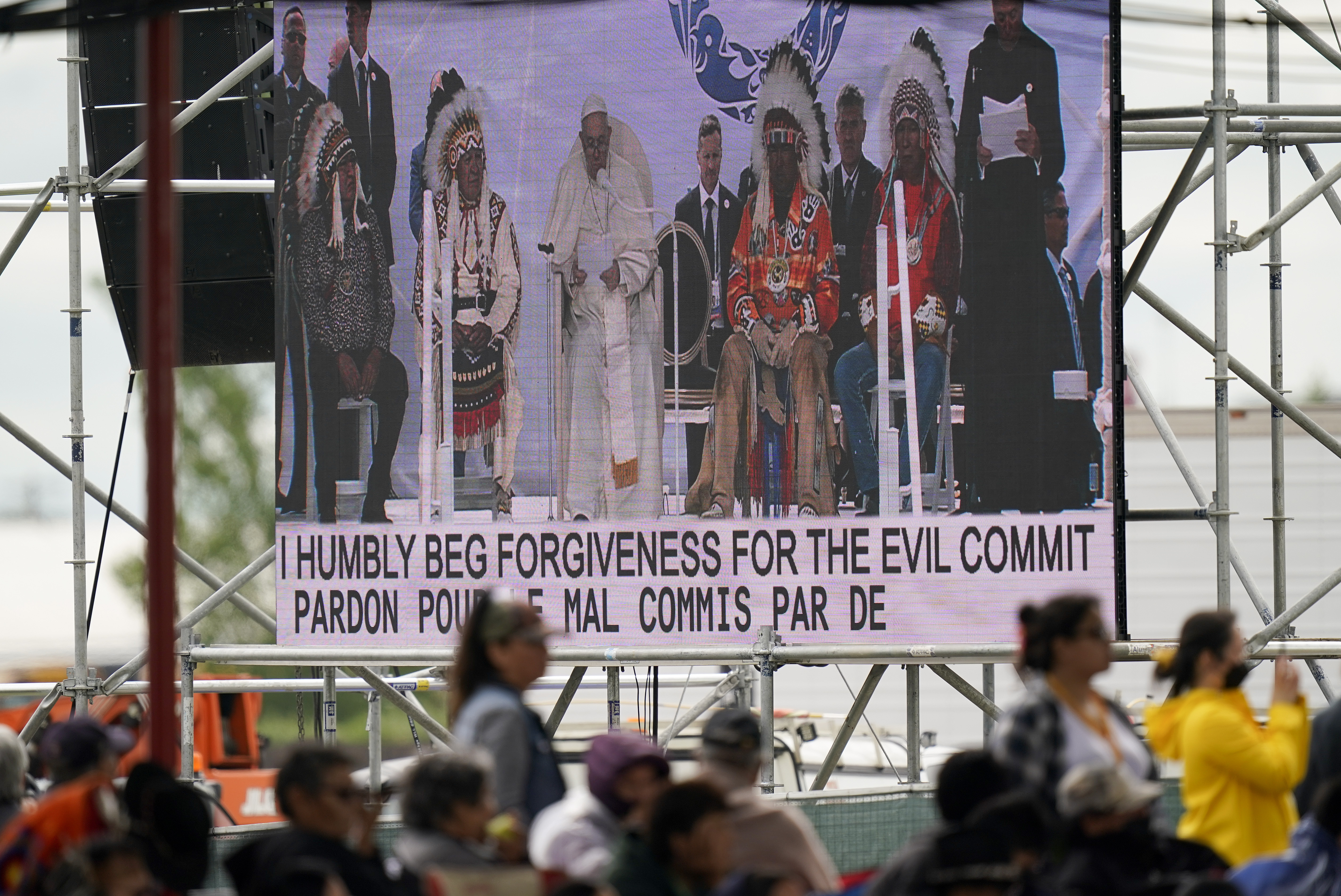
Warning: The story below contains details about abuse in residential schools that may be upsetting. Canada’s National Indian Residential School Crisis Line is available 24 hours a day on 1-866-925-4419.
Edmonton, Alberta, Canada – Chantalle Buffalo lives with the painful history of Canada’s residential schools on her doorstep in Maskwacis First Nations community in central Alberta.
The 32-year-old’s mother and other relatives are survivors of Ermineskin Indian Residential School, the former government-funded, Roman Catholic-run boarding facility for Indigenous Peoples that operated there for more than 50 years until 1975. Pope Francis paid a visit to the site this week as part of his “pilgrimage of penance” for abuses committed against Indigenous communities.
But many like Chantalle are less than impressed with the pontiff’s visit.
“You never invite a wolf into your den,” Chantalle said frankly, during a telephone interview with Al Jazeera days before the pope’s arrival. “Like, you don’t bring somebody here that hasn’t fully understood what has gone on for all these years. I don’t accept that he’s coming to my home. It’s not something I agree with.”
From the late 1800s until 1997, there were 139 federally mandated residential schools which assimilated Indigenous children into mainstream Canadian culture. Abuse was widespread and the children were barred from speaking their Indigenous language and practising cultural norms.
More than 150,000 Indigenous children attended the institutions – 60 percent of which were overseen by the church.
Maskwacis is the only First Nations community and former residential school site the pope is visiting during his six-day-long trip to Canada, where he reiterated an earlier apology about the church’s role in the schooling system.
Chantalle fumed as she spoke about the preparations the community and the Province of Alberta made to host the pope, who is also visiting Quebec and Nunavut.
“The reconciliation, there’s a whole bunch of reasons why he is coming, yes,” she said. “But it’s not like he’s going to come and recognise what has happened on our reserve.”
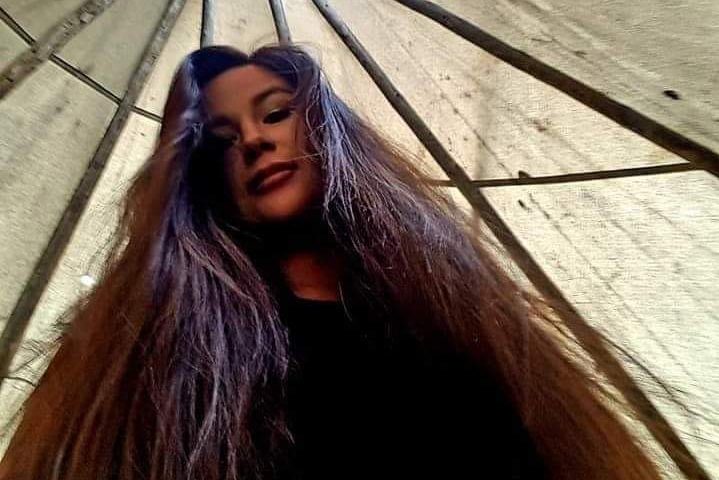
Maskwacis, like many other First Nations, struggles with crumbling infrastructure, poverty, addictions, suicide and high unemployment rates. But Alberta Transportation was paving several roadways in the Ermineskin community of Maskwacis as well as improving the surrounding infrastructure specifically for the pope’s visit.
Chantalle felt it was a cover-up of the real and lasting effects of the residential schools where thousands of Indigenous children experienced neglect and abuse, and died. In recent years, unmarked graves of Indigenous children have been discovered on the grounds of former institutions, and the searches continue.
“Everyone here is going to get dressed up in their traditional clothing for him [the pope]. And they’re paving the way for him. Oh, my God, it’s just blowing my mind!” Chantalle said. “I don’t think he really is going to see all of the poverty and what’s going on in the reserve. And they have this Holy guy coming to the reserve and be a few feet away from the former residential school. They’re still uncovering graves there…”
Although several of Chantalle’s family members planned to attend the ceremony with the pope in Maskwacis, she refused to go.
“I know a lot of community members aren’t happy about him coming either.”
‘Follow your words with actions’
Christi Belcourt, 55, a Metis (mixed Indigenous and non-Indigenous) artist from the Lac Ste Anne Metis community – located about 51 miles (82km) west of Edmonton and home to the site of a Catholic pilgrimage which annually attracts thousands of Indigenous participants from across Canada and the United States – also does not support the pope’s visit to her homeland. She said that although the Catholic Church perpetrated violence against Indigenous Peoples, the institution is irrelevant to her.
“I think for a lot of us who are not Catholic, who follow a traditional way, the Catholic Church is not even something that we give a thought,” she explained during a telephone interview.
“But, as a traditional person, what I’ve learned in our lodges is that we always respect anybody else’s way of approaching spirituality. That’s why I think there’s a lot of silence around this visit by a large majority of Indigenous folks because, number one, I think the church is not relevant; and number two, we respect the fact that there are family members we have or others in our community for whom the church is relevant.”
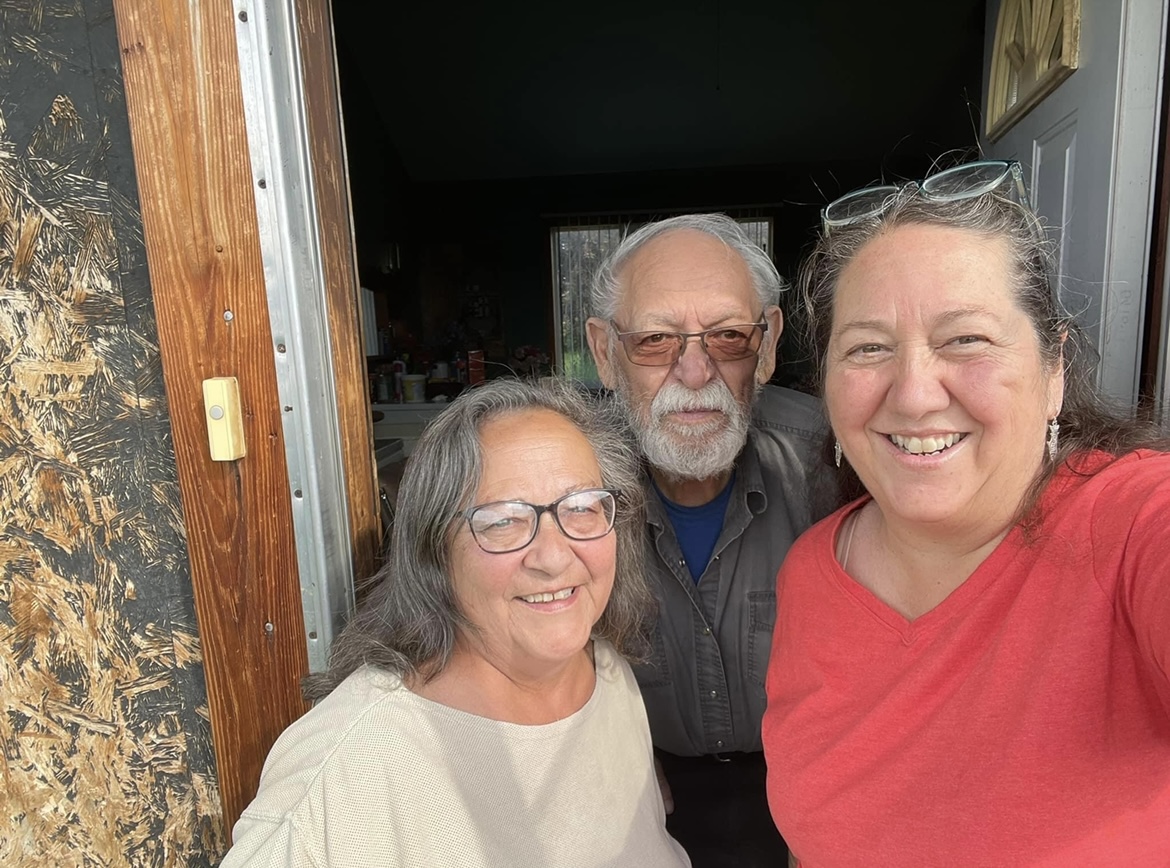
For Christi, the pope’s apologies to Indigenous survivors do not go far enough. She said she will decide if it is sincere when the church takes action. That starts with the repealing of the Doctrine of Discovery. The doctrine was created by Pope Alexander VI in 1492 upon Christopher Columbus’s voyage to the Americas and was used by European colonisers to stake claim to Indigenous lands. The land was considered terra nullius (vacant land) if it had not yet been occupied by Christians. It ushered in an era of land dispossession and genocide against Indigenous nations.
“You have to follow your words with actions. We need the church to repeal the Doctrine of Discovery, we need them to return our lands [the lands which are still owned by churches on Indigenous territories]. We need them to actively participate in expelling priests and nuns who have abused our children instead of offering them shelter and shuffling them around to different communities where they can continue the abuses and actively seek persecution.”
These are not the only stipulations from Christi and other Indigenous Peoples, including survivors and Indigenous delegates who travelled to Rome in late March and April to meet with Pope Francis. They have requested the handing over of thousands of documents held by the Catholic Church and federal and provincial governments, which may hold clues to help piece together the circumstances behind the deaths of Indigenous children in residential schools. Additionally, the Vatican currently holds a vast collection of Indigenous ceremonial artefacts, many of which belong to Indigenous communities in Canada. It is time those “looted” items are returned, Christi said.
“There are a number of these things that they [the Catholic Church] could be doing. That would prove that they are truly remorseful and prove that they’re truly wanting to seek a new relationship. In my mind, this would be a brand-new relationship because we’ve never had a relationship with them that has been anything other than them trying to assimilate, oppress and commit genocide against us.”
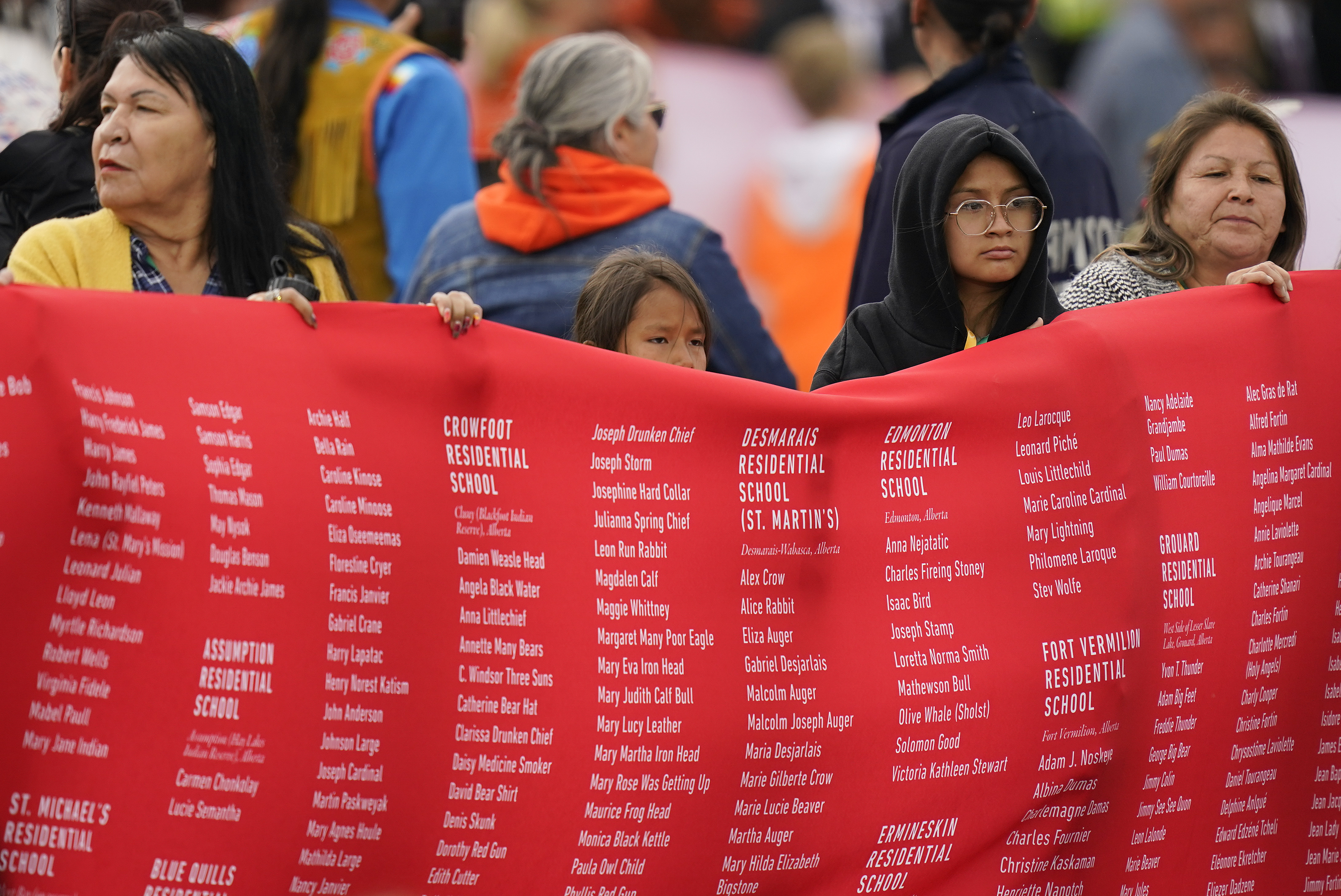
As part of this week’s tour – the first Papal visit since 2002 – Pope Francis travelled to Christi’s home community of Lac Ste Anne on July 26 for a religious gathering called Pilgrimage. It is an event that annually attracts thousands of Catholic believers, the majority of whom are Indigenous. It is believed the water of Lac Ste Anne wields healing powers.
“But my community never had any control or say. It was never asked if the pope should attend there,” Christi said ahead of the pilgrimage.
She was concerned that an influx of eager believers vying to see the pope would disrespect her ancestors. In preparation for the Papal visit there, the Catholic Church was paving sidewalks that led to the lake – it was happening near the unmarked graves of her relatives. Christi called for the protection of the area with an appropriate barrier.
“The irony is not lost on me that we must fight for the dignity of our ancestors’ remains buried in unmarked graves while the pope will be mere metres away as he drives on the new road built for his visit,” Christi wrote in a recent letter to the Catholic Archdiocese of Edmonton.
‘It keeps opening old wounds’
John Brady Macdonald, 41, from the Muskowekwan First Nation in Saskatchewan, grew up on the site of the Prince Albert Indian Student Residence. Both his parents attended the residential school there, and although he attended the nearby Catholic public elementary school instead, he witnessed the devastating effects the residential school had on his parents and on other First Nations students who were brought in from outlying communities, including being forcibly removed from their parents, forbidden to speak their language, being abused, and being made to assimilate into white society.
“The year that the last residential school closed [in 1997], the movies in the theatres were Independence Day and Twister, the Spice Girls’ first album was released and Friends was in season three,” John said during a phone interview with Al Jazeera, expressing both wonderment and dismay at the fact that Indigenous children were being segregated and abused in broad daylight at a time still fresh in recent memory.
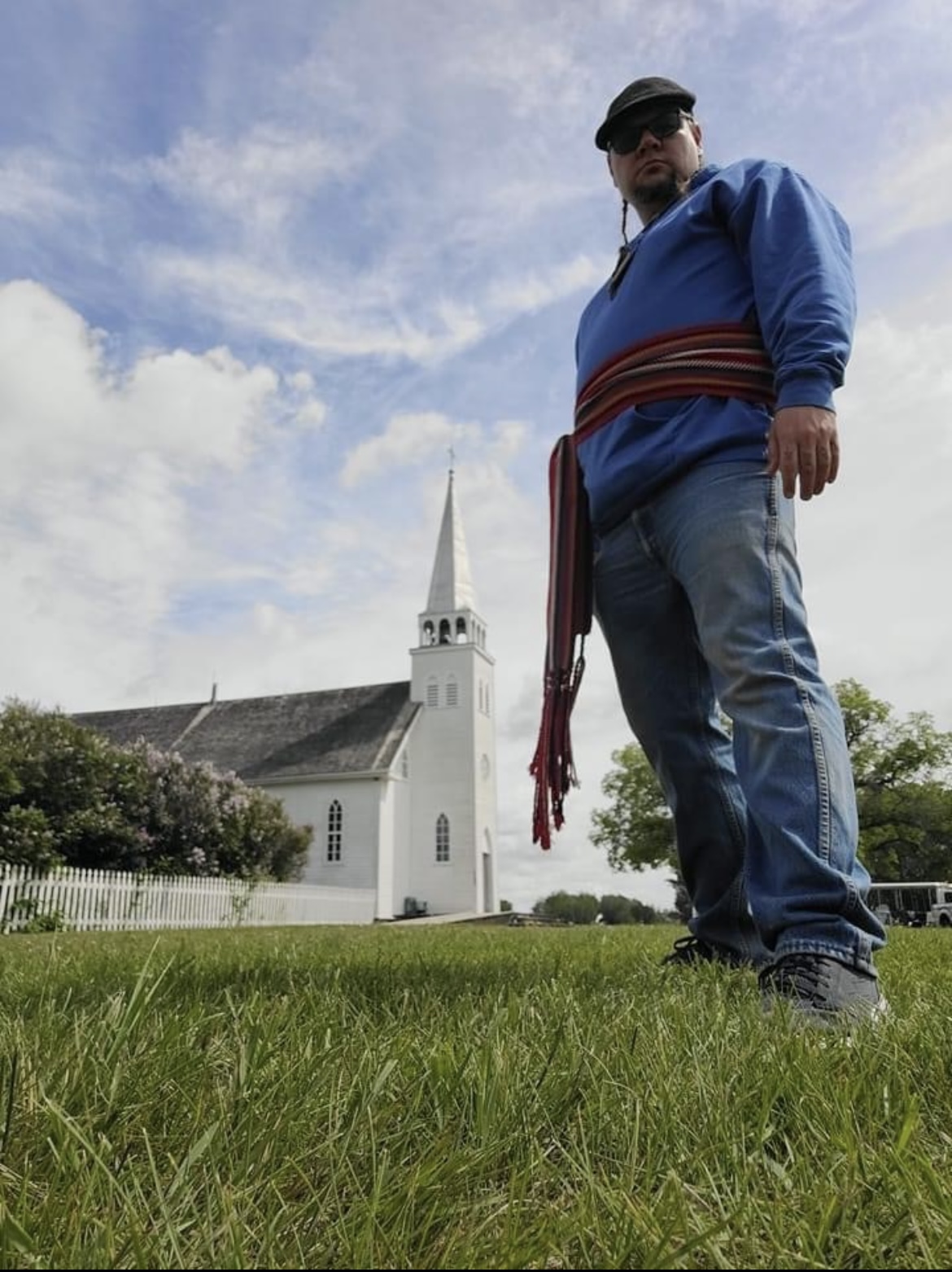
John also experienced racism from the staff who worked at the Catholic elementary school he attended, he said.
“Right from day one, that’s when they [the staff] did the cultural and spiritual abuse. It was on the first day, in pre-school. I referred to my grandmother by her Cree name and the teacher spun me around and told me that I was not to talk that ‘gibberish’ in the classroom.”
He said that the racism – and the subsequent emotional, physical and sexual abuse he experienced both while living at the residential school site as well as at the Catholic school he attended – took a heavy toll on him.
“We had that disconnect from our communities, from our language and culture. Catholicism was forced upon us. We were told that our ways were wicked and we were always called ‘dirty little Indian’ and made a mockery of.”
John wants nothing to do with the Catholic Church or the pope, because to him they represent the continued “horrors” of the harms they perpetuated.
“I’m not comfortable with it [the pope’s visit]. It doesn’t heal. It keeps opening old wounds, it’s cutting the stitches every time I hear about it,” he said, his voice peppered with anger and grief.
“The concept of reconciliation is that we, as survivors, are not the ones who have to do the reconciling, and it feels like so much of the work that is being done is on our backs. But I do hope that those who are going [to engage with the pope when he’s in town] – and this is going to open wounds – that they have a support structure around them. It’s going to bring up a lot of emotions again.”







